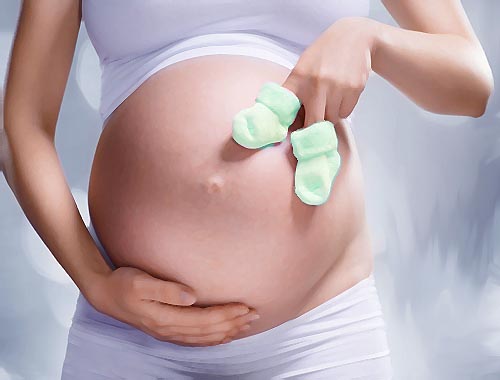Pregnancy

Published: 18 Jun 2025
ICD9: V22.2 ICD10: Z33.1 ICD11: XT0S
Pregnancy is the period during which one or more offspring develop inside a woman's uterus.
It begins when a sperm fertilizes an egg, and lasts until birth.
Here's a breakdown of key aspects:
![]() Fertilization: Pregnancy starts with the fertilization of an egg by a sperm, typically in a fallopian tube.
Fertilization: Pregnancy starts with the fertilization of an egg by a sperm, typically in a fallopian tube.
![]() Implantation: The fertilized egg (zygote) travels to the uterus and implants in the uterine lining (endometrium).
Implantation: The fertilized egg (zygote) travels to the uterus and implants in the uterine lining (endometrium).
![]() Gestation: The gestation period, the time from fertilization to birth, is approximately 40 weeks (or 280 days) from the first day of the woman's last menstrual period. This is divided into three trimesters, each lasting about three months.
Gestation: The gestation period, the time from fertilization to birth, is approximately 40 weeks (or 280 days) from the first day of the woman's last menstrual period. This is divided into three trimesters, each lasting about three months.
![]() Development: During pregnancy, the fertilized egg develops into an embryo, then a fetus. Various organs and systems form, and the fetus grows in size and complexity.
Development: During pregnancy, the fertilized egg develops into an embryo, then a fetus. Various organs and systems form, and the fetus grows in size and complexity.
![]() Hormonal changes: Pregnancy is accompanied by significant hormonal changes, primarily involving estrogen, progesterone, and human chorionic gonadotropin (hCG). These hormones support the pregnancy and prepare the woman's body for childbirth and lactation.
Hormonal changes: Pregnancy is accompanied by significant hormonal changes, primarily involving estrogen, progesterone, and human chorionic gonadotropin (hCG). These hormones support the pregnancy and prepare the woman's body for childbirth and lactation.
![]() Physical changes: A woman experiences numerous physical changes during pregnancy, including weight gain, breast enlargement, morning sickness (nausea and vomiting), increased urination, fatigue, and changes in skin pigmentation.
Physical changes: A woman experiences numerous physical changes during pregnancy, including weight gain, breast enlargement, morning sickness (nausea and vomiting), increased urination, fatigue, and changes in skin pigmentation.
![]() Prenatal care: Regular prenatal care is crucial for a healthy pregnancy. It involves check-ups with a healthcare provider, screenings for potential complications, advice on nutrition and lifestyle, and preparation for labor and delivery.
Prenatal care: Regular prenatal care is crucial for a healthy pregnancy. It involves check-ups with a healthcare provider, screenings for potential complications, advice on nutrition and lifestyle, and preparation for labor and delivery.
![]() Birth: Pregnancy culminates in childbirth (labor and delivery), where the baby is expelled from the uterus through the vagina.
Birth: Pregnancy culminates in childbirth (labor and delivery), where the baby is expelled from the uterus through the vagina.
In simpler terms: Pregnancy is when a woman carries a baby inside her until it's ready to be born.